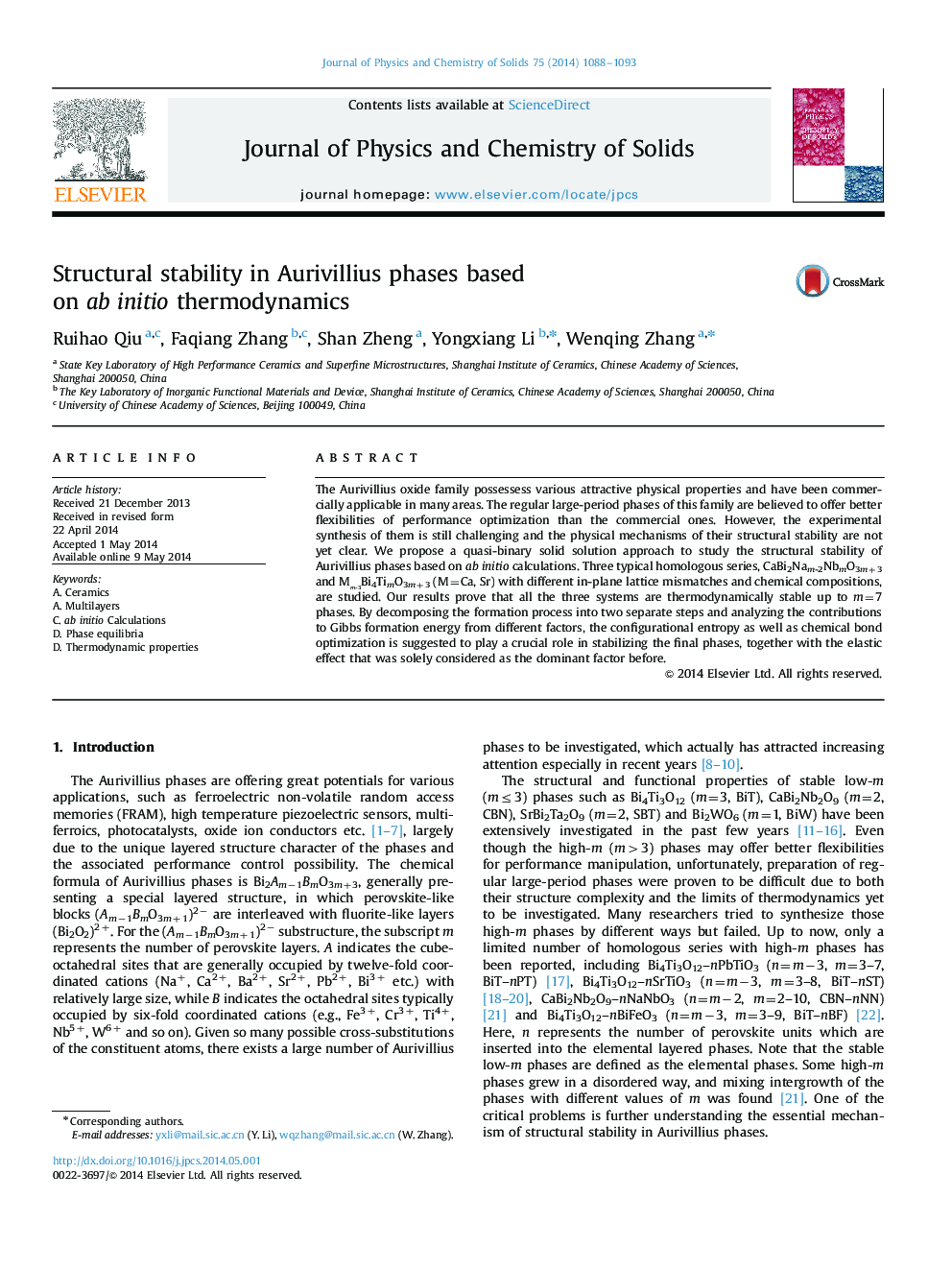| Article ID | Journal | Published Year | Pages | File Type |
|---|---|---|---|---|
| 1515618 | Journal of Physics and Chemistry of Solids | 2014 | 6 Pages |
•A quasi-binary solid solution approach is proposed to study the stability of Aurivillius phases.•Phases m≤7 of three Aurivillius series are all thermodynamically stable.•The configurational entropy plays a crucial role in the stability issue.•The formation enthalpy is divided into pure strain effect and chemical effect.•Our approach is expected to studying the stability issue of other layered perovskites.
The Aurivillius oxide family possessess various attractive physical properties and have been commercially applicable in many areas. The regular large-period phases of this family are believed to offer better flexibilities of performance optimization than the commercial ones. However, the experimental synthesis of them is still challenging and the physical mechanisms of their structural stability are not yet clear. We propose a quasi-binary solid solution approach to study the structural stability of Aurivillius phases based on ab initio calculations. Three typical homologous series, CaBi2Nam-2NbmO3m+3 and Mm-3Bi4TimO3m+3 (M=Ca, Sr) with different in-plane lattice mismatches and chemical compositions, are studied. Our results prove that all the three systems are thermodynamically stable up to m=7 phases. By decomposing the formation process into two separate steps and analyzing the contributions to Gibbs formation energy from different factors, the configurational entropy as well as chemical bond optimization is suggested to play a crucial role in stabilizing the final phases, together with the elastic effect that was solely considered as the dominant factor before.
